If someone sat down next to you and asked you to explain what Christians believe…where would you start? Would you hem and haw or would you jump right in?
In this episode, you’ll hear the story of my first stuttering time I had to explain the Gospel, and I’ll share a biblical framework for how to explain the Gospel to anyone, whether it’s your child or some dude off the street.
Learn how to confidently communicate the message of Jesus, explore creative and engaging methods to teach the gospel, and find out how to incorporate this essential truth into discipline moments. Whether you’re a seasoned believer or new to sharing your faith, this episode equips you to nurture a gospel-centered home.
✨ In this episode:
- Understanding the full gospel beyond just sin-management
- Creative ways to engage your kids with the gospel message
- Building a habit of gospel sharing in everyday life
- Practical examples for discipline moments
📚 FOLLOW-UP RESOURCES:
- Free Gospel Printables
- Family Bible Study: “Clues of the Good News”
Subscribe on your favorite listening platform for practical tips, real parent interviews, and encouragement as we become faith gardeners together!
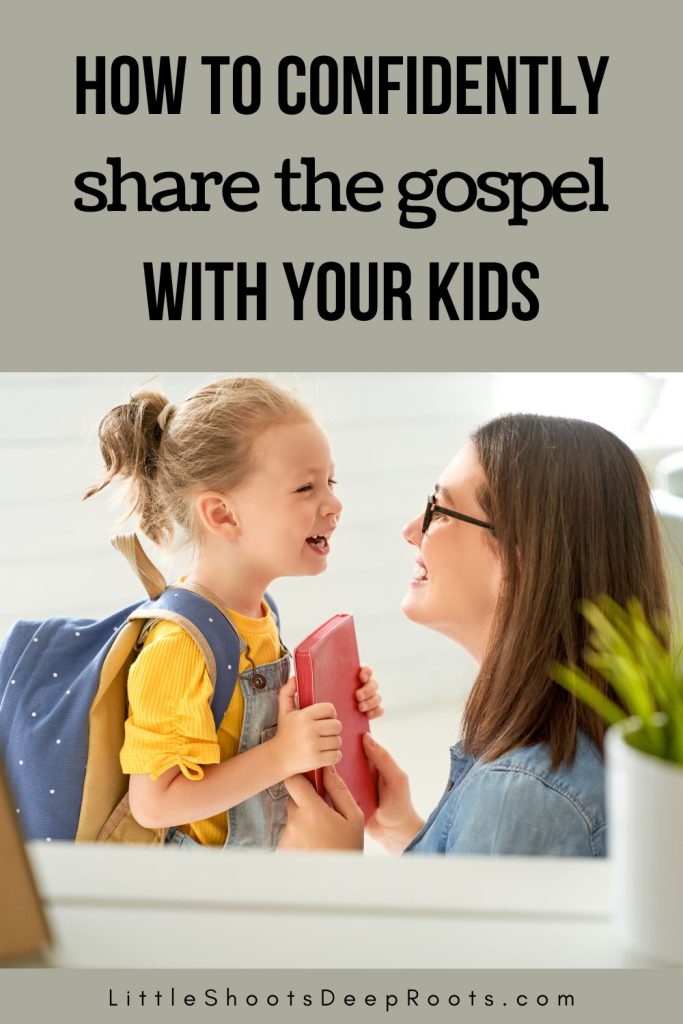
TRANSCRIPT:
Welcome to Little Shoots, Deep Roots, where we become faith gardeners, cultivating deep faith in our families one little habit at a time. I’m your fellow gardener, Christie Thomas.
Today, we’re diving into one of the most important topics we’ll ever discuss: how to share the gospel with your kids. It’s the greatest story ever told, and as parents, we have the incredible privilege of helping our children understand and embrace it.
The word Gospel means “good news”! But what IS the good news of the gospel? If I asked you to share the gospel with me in one minute, could you do it?
Many years ago, I sat in the first row in my lecture at University, waiting for it to start. I have no idea why I sat in the front that day, normally being a back-row sitter. It must have been the fascinating subject material…I mean, jellyfish and crustaceans would certainly keep anyone on the edge of their seat.
My lab partner (always a front-row sitter) came and sat next to me, and we started chatting. I don’t recall the subject of our discussion, except that she suddenly asked me THE question…
“What do Christians believe anyway?”
My heart stuttered, my mouth went dry. I had been a Christian most of my life, why was I suddenly panicking? I hastily drew a bridge on my notebook and fumbled through the “bridge illustration” with her, but class was about to start. I’m pretty sure I told the whole thing in less than a minute (once I actually got started).
Has this ever happened to you? Maybe your kids have asked, or maybe you were never really sure in the first place. Can you share the gospel confidently with a friend? How about with your child?
I can now, and that’s partly due to maturity and partly because I know the Bible better. I’ve become convinced that the bridge illustration, while helpful, is lacking in the robust depth of the full gospel; the gospel isn’t just hell insurance to get us on the right side of eternity after death.
God has so much more to offer than just a place to go after we die. In fact, in the Bible, it is called “abundant life”. Doesn’t that sound amazing? Doesn’t it sound like something we want to invite our friends, our children, even our enemies into? Abundant life starts the moment we invite Christ to be the center of our lives.
What Is the Gospel?
The gospel, in its simplest form, is the good news that Jesus came to save us from sin and bring us into relationship with God. It’s summarized beautifully in John 3:16:
“For God so loved the world that he gave his one and only Son, that whoever believes in him shall not perish but have eternal life.”
Before we can share it with out kids, we have to understand it ourselves, which is why I’m going to use most of this episode to explain the gospel in a few different ways, ways that you can also use with your kids.
You may have seen something called “the wordless book” or made beaded bracelets with the colors in Sunday School.
The colors are usually presented in this order:
Black: Our sin
Red: Jesus’ sacrifice for our sin
White: Our new purity
Green: New growth in Christ
Yellow: For the hope of heaven
But this color-presentation is missing something essential.
It’s missing God’s motivation.
Let’s frame this using something from Stanford researcher and author of a bestselling book called Tiny Habits, Dr BJ Fogg. Dr Fogg created a behavior equation. He discovered that every single behavior has 3 aspects: motivation, ability, and a prompt. When you’re missing one of those things, a behavior simply doesn’t happen.
So if we think about Jesus Christ coming to save us from our sins, he had a prompt (our sin problem) and he had the ability to do it, but, if we start our gospel presentations with sin, we have a motivation problem. Why on earth would God want to save us from our sin?
The answer to that question, the motivation for Christ’s sacrifice, lies BEFORE sin.
The gospel starts at creation, not at the fall. If God hadn’t created the earth and the people in it with a beautiful story and plan in mind, the fall wouldn’t have been painful. It wouldn’t have needed fixing. We wouldn’t have needed a Savior.
So let’s change up that full-color gospel, so it includes God’s motivation for sending Christ as well as a deeper understanding of the full scope of salvation. It ain’t just about getting into heaven when we die.

- Gold: reminds us of heaven, the Kingdom of Light (In the beginning was God. God always existed – He was never born. God lived in the perfect place, the Kingdom of Light as the fully complete, Triune God, Father, Son and Holy Spirit.)
- Green: reminds us of the amazing home God made for us. (God chose to create Earth. Our planet was so amazing that God said, “it is good.” He created people to live here, and said, “it is very good.” God says this of you too. You are his very good creation, designed to live with God on this beautiful planet.)
- Dark Blue: reminds us of the darkness and sadness of sin (People chose to disobey God and go their own way. This is sin. Sin brings sadness, fighting, sickness and death. We’ve all sinned and it separates us from God. This brings spiritual death and real death, because death is what happens when there is no life. No God, no Life.)
- Red: reminds us of Jesus’ blood and death (God didn’t want sin to be the end, so He sent His son Jesus, to take on our sin and death by dying on a cross.)
- White: reminds us of cleanness (Because Jesus came back to life, we can have real life again too. We get to be cleaned of our sin. When you say “Jesus is Lord” and believe that God raised him from the dead, you are saved, you are clean, and you step into the Kingdom of Light.)
- Green: reminds us that we grow with God and help the world become beautiful again (In this new life, God is re-creating you. He gives you the Holy Spirit to help you learn to love him and love others. As you grow with God, you should be giving the world a little reminder of the beautiful and incredible place it was meant to be.)
- Gold: reminds us of God’s Kingdom of Light, where we’ll live for eternity (At the end of your life, Jesus will bring you home to the perfect place where there is no more death, sadness, sin, or sickness.)
Here’s how I remember the order of the colors: they’re almost a palindrome, which is a word that’s read the same way backward and forward.
- The gold of heaven begins and ends our eternal story.
- The green of creation and re-creation is the beginning and end of our earthly story.
- Black, red, white are in the middle.
- God’s plan of salvation hinges on the centre: the red.
THIS is the good news of Jesus Christ – not just what God saved us from, but what he’s saving us into. He rescued us from the dominion of darkness and brought us into the Kingdom of Light!
The Faith Growth Cycle: Gospel Edition
In my book, Little Habits, Big Faith: How Simple Practices Help Your Family Grow in Jesus, I teach the Faith Growth Cycle. Today, we’ll use this cycle to help you share the gospel with your kids.
1. The Seed Stage
The Seed stage begins with prayer and intention. Before you share the gospel, ask God for wisdom and prepare your heart. Let’s pray together:
God, thank you for the good news of Jesus. I want my kids to know and understand your love and truth. Help me to first understand the gospel and what it means for my life, and then to share it in small, consistent ways that are clear, meaningful, and full of grace. Prepare their hearts to hear and respond to your message. In Jesus’ name, amen.
2. The Sprout Stage
The Sprout stage is where we take small, manageable steps to make sharing the gospel a habit. This one is going to look different from things like prayer or Bible reading because you’re not likely to be talking about the gospel everyday, or even every week. Rather, we’re going to look for little cues in your child’s life that will remind you to share the good news with them.
Sharing the gospel with kids isn’t just about the big moments when you fully explain the plan of salvation, but about being ready with the overall message of the Gospel when your kids need it.
Here’s the 5-step process for starting a gospel-sharing habit:
- Pick a habit: sharing the gospel
- Make it smaller: share just a portion (but make sure you’re not always talking about the SAME portion!)
The color gospel presentation I shared above is great, and if you’ve shared it with your child, you can point back to certain parts of it in these small moments. Here’s another option for a really simple version of the Gospel that you can use with your tiny habit.
1) God made it – God is good, God made you good, he loves you
2) People broke it — people messed it up, you mess it up, you sinned
3) Jesus fixed it – for the wages of sin is death, but the gift of God is eternal life in Christ Jesus our Lord
4) Spirit helps you live it – we don’t live a faithful life on our own power, but by relying on the Spirit to help us.
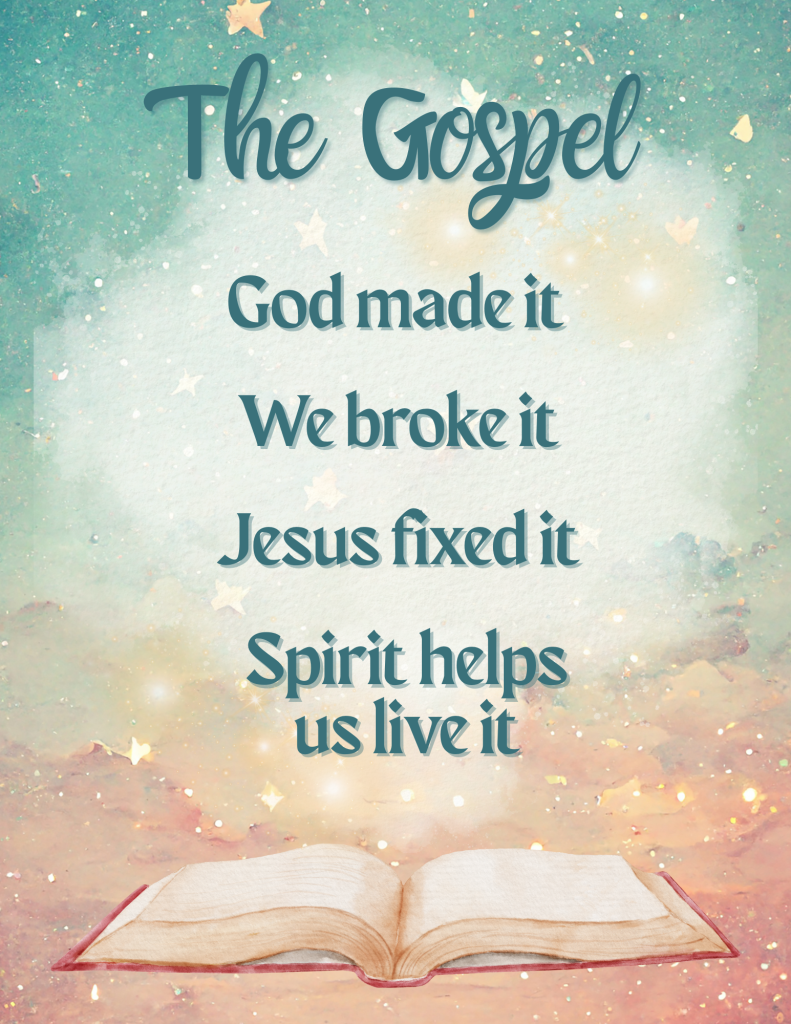
3. Attach it to something you already do: The very best cue for sharing the gospel with your child is when they’ve done something willfully wrong. It’s (hopefully) not going to happen every day, but using your child’s sin as a cue is a great way to remind you of the best way to respond.
4. Celebrate: The celebrate stage is still really important when you’re sharing the gospel, because you want to walk away from these conversations feeling at peace, not like you just had a fight with your kids. Before this ever happens, commit to a specific celebration to use after you’ve had a gospel conversation with your child due to their sin. This might be a longer hug than normal, a special smile, the phrase “I love you SO much” or anything that brings peace and joy to the end of your moment together.
5. Set yourself up for success: What one-time actions do you need to take before you can start this habit? You might want to consider printing off the color gospel I shared before, which is available in the show notes. Or you might want to memorize the 4-step version I just shared. Whatever it is, make sure to do it before you encounter this moment with your kids.
Let’s talk about how this might look with a 4 year old and with a 14-year old.
When your 4-year old does something that involves willful sin, a time when you KNOW he knows better. We’re not talking about calling every childish behavior a sin, but choosing a moment when the Lord confirms in our heart, this is sin and it needs discipleship.
Let’s say he smacked his sister because she had a toy he wanted.
“Buddy, God didn’t make you to smack your sister. He made you to be good and kind. But what you just did was a sin. It hurt your sister. It was wrong. But that’s why Jesus came! He came so that we could have forgiveness.”
At this point, you probably need to stop talking and see if your child is repentant. If not, you’ll need to pray for that because there’s no point in a kid apologizing from a hard heart. But if he feels bad, you can help him ask Jesus for forgiveness. But don’t forget about the green part of the gospel colors, or the last part of the 4-part gospel: Spirit helps you live it. Teach him that the next time he wants to smack his sister, he should ask Jesus to help him choose kindness instead. Before separating, make sure to do something that brings you both joy – a big smile, a hug, etc.
Let’s try this with a 14-year-old. You just discovered that she’s been sneaking her phone into her room to watch videos instead of doing her homework.
“This is not the way God designed you to be. He created you to be truthful, honest, and good. But you’ve chosen to behave opposite the way God made you! You’ve lied to me, and that’s a sin. It hurts our relationship. But do you know what Jesus did? He’s so good and perfect, but he chose to take our sin upon him and die on the cross so we can live.”
Again, you’ll need to stop to see if she’s repentant. When she’s ready, she can ask God for forgiveness. Once that’s happened, be sure to remind her of part 4 – Spirit helps you live it! She isn’t left to struggle on her own. The Holy Spirit has been given to help her make better choices the next time again. Before separating, make sure to do something that brings you both joy – a big smile, a hug, etc.
3. The Root Stage
If you already have a habit of sharing the gospel with your kids, consider how God might be calling you to go deeper:
- Make it longer: instead of sharing the 4 step gospel message, move to the 6-step one with the colors
- Make it more complex: Memorize a verse to go along with each section of the gospel message, and remind each other of it often
- Add a new habit: After sharing the message, give your child time and space to pray. This is also part of making it more independent, teaching them to go straight to God when they feel convicted.
- Make it more independent: Ask you child to lead you through the parts of the Gospel, instead of you leading her.
Practical Tools for Sharing the Gospel
To help you share the gospel with your kids, I’ve linked two resources in the show notes:
- This free pack of gospel printables, including the full color gospel and a poster with the 4 simple parts.
- Clues of the Good News, a really fun family Bible study that helps you find the clues of the gospel all through the Old Testament, showing you how they point to the good gospel. If you’re looking for a simple but guided way to introduce the gospel to your kids, this would be perfect.
Coming Up Next
Next time we’ll talk with the woman who first taught me the importance of sharing the gospel with kids in these discipline moments: Bethany Kimsey, a mom of 8. I’m excited for you to meet her and discover how she implements tiny gospel habits into her home.
Closing Blessing
Let me pray a blessing over you.
May God give you boldness and grace as you share the good news of Jesus with your children. May their hearts be open to His love, and may your family grow in the joy and hope of the gospel. In Jesus’ name, amen.
Thanks for joining me here at Little Shoots, Deep Roots. Don’t forget to subscribe and download the free gospel resources linked in the show notes.
Growing with you,
Christie





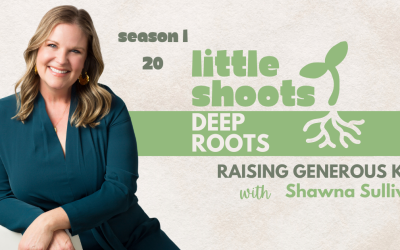
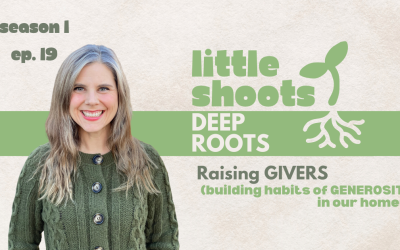

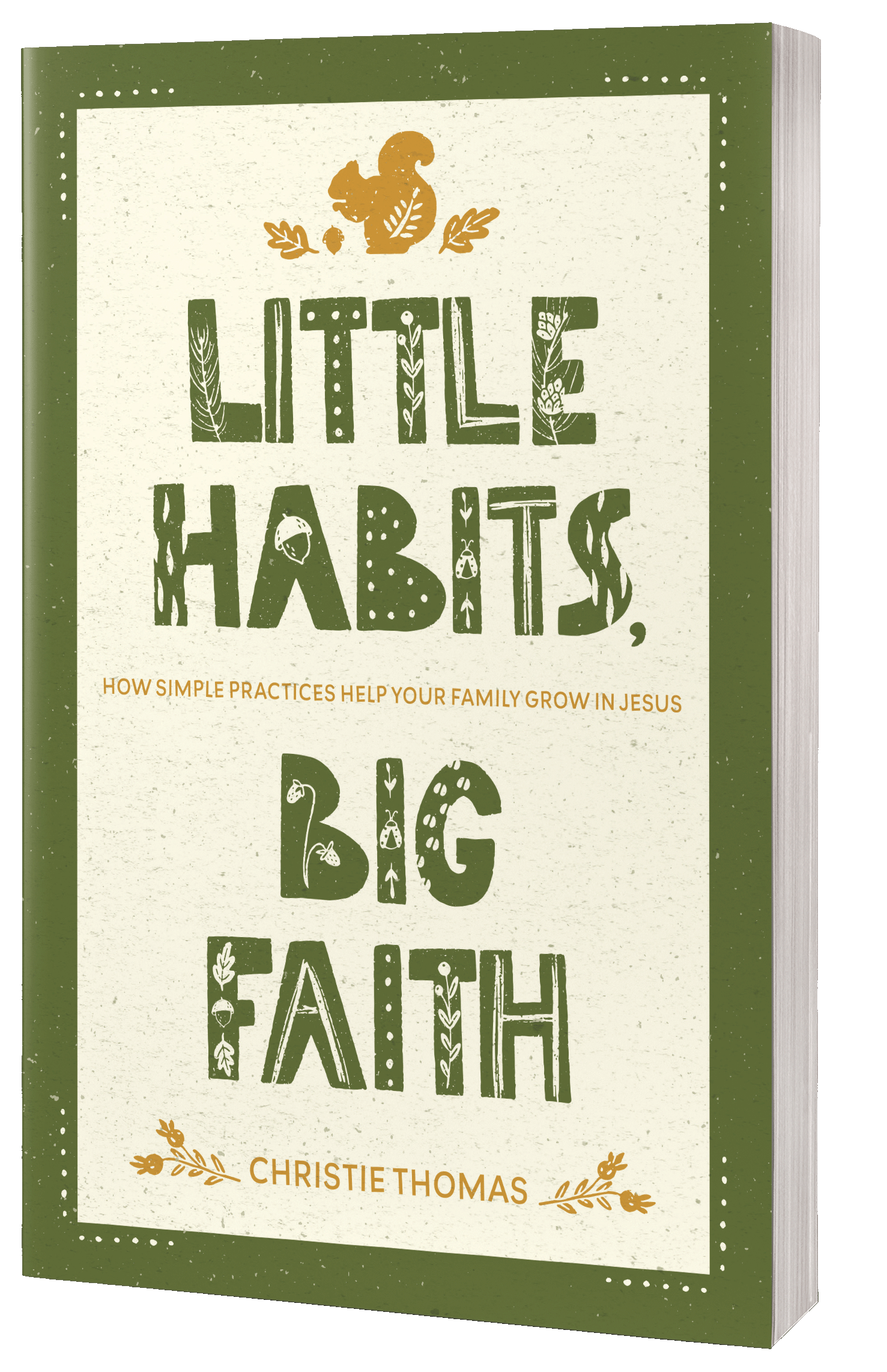
Beautiful Gospel explanation – simple for kids to understand and applicable at every age. Thank you.